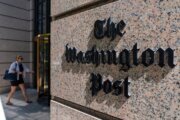When the bear returns.
After smooth sailing last year, U.S. stocks have encountered choppy waters in 2018. Volatility has picked up, with stocks entering correction territory twice in the last few months. Understandably, the roller-coaster ride has given some investors the jitters. Which brings up the question: Could a dreaded bear market be on the horizon? In contrast to corrections — which mark a 10 percent downturn from recent highs — bear markets are at least doubly painful, marking a decline of 20 percent or more. While analysts generally aren’t predicting a deep downturn, bear markets are hard to predict. Here are seven of the most notorious ones.
2007 Great Recession
The United States enjoyed a remarkable housing boom in the years leading up to 2007, but underlying it all were cracks in the foundation. The rise of subprime lending enabled home buyers to buy expensive homes well beyond their means, and when that market collapsed, the banks followed suit. Once investment banks Bear Stearns and Lehman Brothers failed, a deeper crisis spread throughout the financial system. The Standard & Poor’s 500 index fell 57 percent between October 2007 and March 2009, in tandem with a recession that at its worst point left 15 million Americans unemployed.
2000 Dot-com bust
The late 1990s were a good time for stocks, driven in part by the dot-com boom as investors piled funds into trendy internet companies. But the bubble burst in March 2000, and within months, the capital that these companies had relied upon dried up. Many of these companies, like Pets.com, became worthless. The S&P 500 fell 49 percent from March 2000 to October 2010.
1987 Computerized trading unhinged
“Does 1987 Equal 1929?” That was the headline on the front page of The New York Times the morning after stocks plunged nearly 25 percent in just one day. Oct. 19, 1987, later came to be known as Black Monday, the deepest one-day percentage decline in the Dow Jones industrial average. The initial decline was exacerbated and dramatically quickened by new computerized trading. From the market’s peak in August 1987 to its deepest point in December, the S&P 500 declined nearly 34 percent. The vast majority of that decline occurred on just one day, Black Monday.
1973 Nixonomics
After the Dow Jones industrial average gained 15 percent in 1972, analysts were upbeat. President Richard Nixon announced the third phase of his economic plan, which removed some wage and price controls enacted in earlier years to tame rapid inflation. The stock market declined the next day, with few investors realizing it was the start of a downturn that would last nearly two years. Runaway inflation and an oil crisis contributed to slower economic growth. Overall, the S&P 500 lost 42 percent of its value between January 1973 through August 1974.
1961 The Kennedy slide
This bear market, which occurred during John F. Kennedy’s presidency, lasted only about six months, but it was a jarring one at the time. American investors had not experienced another bear market since the start of World War II, and before that, the Great Depression. At the time, a young Warren Buffett attributed the downturn in part to inflated stock prices. “For some time, stocks have been rising at rather rapid rates. Corporate earnings have not been rising. Dividends have not been increasing,” he said, noting that a correction was “not to be unexpected.” The S&P 500 declined about 22 percent from late December 1961 to June 1962.
1937 Roosevelt’s recession
The U.S. economy had still not fully recovered from the Great Depression yet, when the government decided to pursue tighter fiscal and monetary policies. President Franklin D. Roosevelt enacted government spending cuts and the Federal Reserve doubled its required reserve ratio — the balances that banks are required to hold at the Fed as a proportion of their deposits. These policies in part led to a double-dip recession, just ahead of the start of World War II. The S&P 500 fell 55 percent between March 1937 and March 1938, according to Yardeni Research.
1930 Great Depression
The Roaring Twenties came to an abrupt end with a stock market crash in October 1929, which was later followed by panic sell-offs of assets and bank runs. Rattled customers withdrew their deposits from banks. Banks failed at an alarming rate, the unemployment rate rose to 25 percent, international trade contracted sharply and prices declined rapidly. The S&P 500 (which at that time was called the “Composite Index” and was made up of just 90 stocks — not today’s 505 stocks), declined more than 80 percent from peak to trough.
More from U.S. News
The Top 10 Investment Portfolio for Millennials
7 of the Best Tech Stocks to Buy for 2018
Artificial Intelligence Stocks: The 10 Best AI Companies
7 Historic Bear Markets originally appeared on usnews.com







